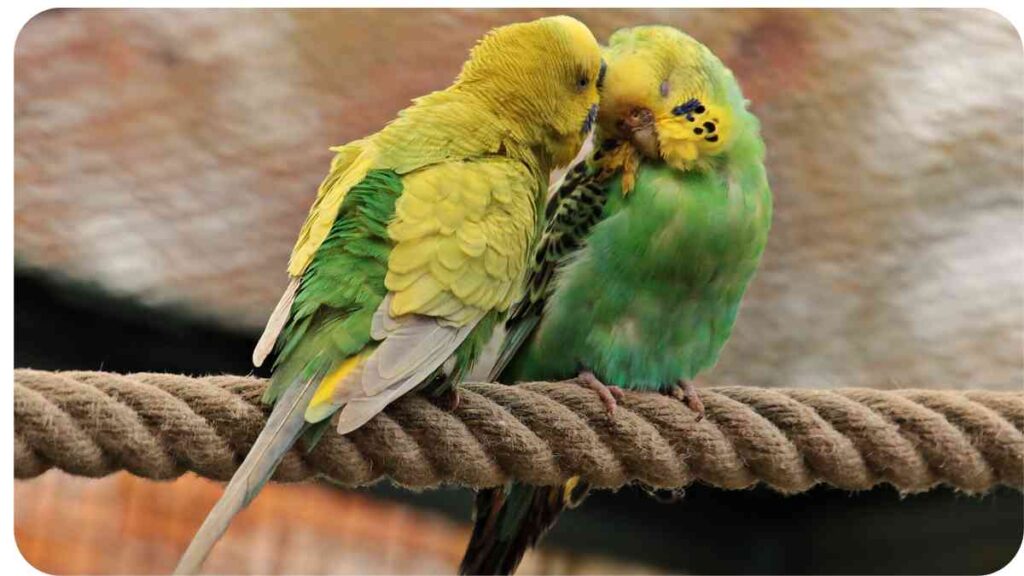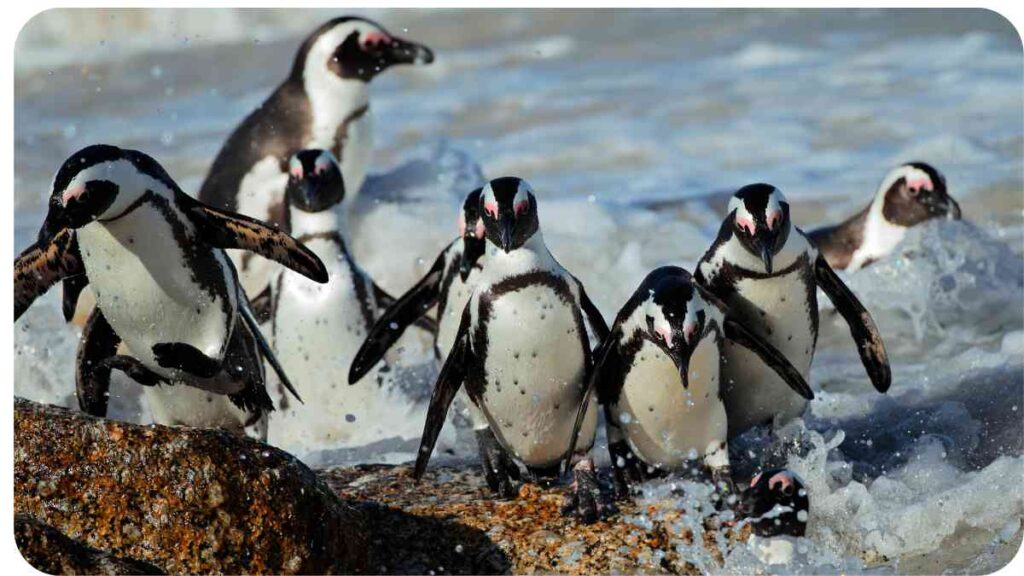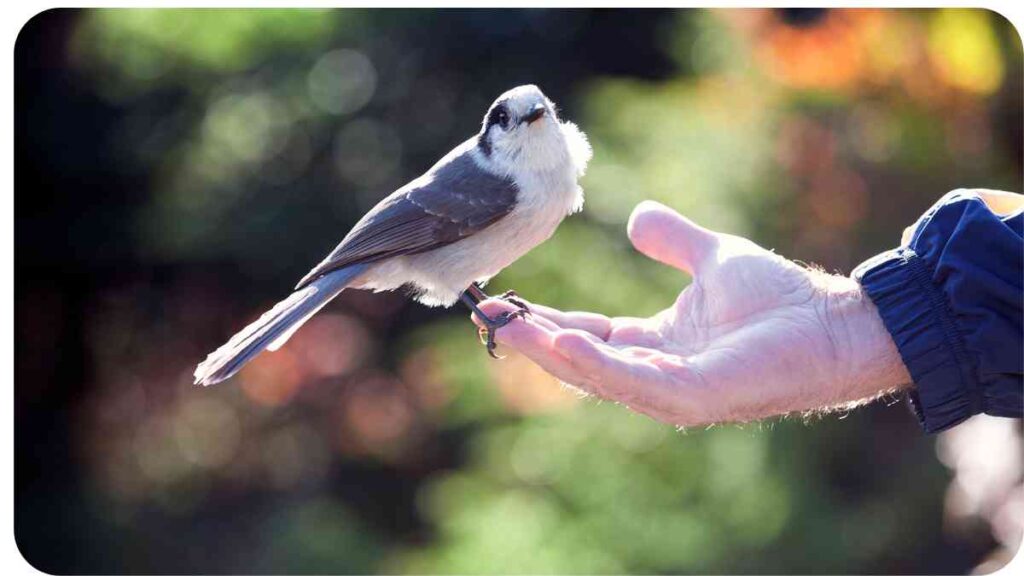Birds, with their vibrant plumage and melodious songs, captivate the hearts of many. Yet, beneath their feathery exterior lies a fascinating realm of maternal affection that often goes unnoticed.
In this exploration, we delve into the world of bird parenting, unraveling the intricacies of maternal care among different species.
| Takeaways |
|---|
| Maternal affection in birds is a fundamental aspect of survival and continuity. |
| Diverse bird species exhibit unique maternal behaviors, from meticulous nest-building to cooperative parenting. |
| Hormones, such as oxytocin and testosterone, play pivotal roles in shaping avian maternal and paternal instincts. |
| Challenges in maternal care, including predation risks and environmental factors, highlight the resilience required for successful parenting. |
| Supporting maternal affection in captivity involves mimicking natural conditions, providing nesting materials, and ensuring a balanced diet. |
| Personal observations enrich our understanding of maternal tenderness in birds, fostering a deeper connection with the avian world. |
| Practical tips for bird enthusiasts include creating bird-friendly spaces, practicing responsible bird feeding, and promoting conservation. |
| The future of maternal studies in ornithology holds exciting prospects with advancements in technology and collaborative research initiatives. |
| Our collective responsibility as stewards of the avian world is to foster environments where maternal instincts can thrive. |
| Maternal care remains an enduring thread in the tapestry of nature, weaving through generations of feathered parents and their precious fledglings. |
2. The Significance of Maternal Affection in Birds

Maternal affection in birds is a crucial aspect of their survival and well-being. The instinctual behaviors displayed by mother birds contribute significantly to the growth and development of their offspring.
2.1 Importance for Offspring Survival
In the avian kingdom, maternal care directly impacts the survival rates of fledglings. From protecting nests to ensuring a steady supply of food, mother birds play a pivotal role in safeguarding the next generation.
Discover the beauty of avian commitment as lifelong mates share unwavering love and devotion. In Monogamous Birds’ Affectionate Bonds, witness the unique expressions of lifelong affection among our feathered friends.
2.2 Behavioral Patterns in Maternal Care
2.2.1 Nesting Behaviors
Nesting behaviors vary among bird species, reflecting their adaptability to different environments. Some craft intricate nests high in trees, while others opt for concealed ground nests. The choice of nesting location often aligns with the mother bird’s strategy to shield her chicks from predators.
2.2.2 Feeding Rituals
The feeding rituals of mother birds are a spectacle of precision and care. Whether regurgitating pre-digested food for chicks or teaching them to forage independently, these actions contribute to the development of crucial survival skills.
Table 1: Nesting Behaviors in Selected Bird Species
| Bird Species | Nest Type | Height Above Ground (ft) | Protective Features |
| Robins | Cup-shaped on branches | 10-15 | Hidden from predators |
| Penguins | Ground burrows | Variable | Shared with mate |
Table 2: Feeding Rituals Across Bird Species
| Bird Species | Feeding Technique | Notable Characteristics |
| Robins | Regurgitation of pre-digested food | Enhances chick’s immunity |
| Penguins | Cooperative hunting | Strengthens familial bonds and ensures food supply |
3. Case Studies: Maternal Affection in Popular Bird Species

Birdwatching has granted me remarkable insights into the diverse ways mother birds express affection. Let’s embark on a journey through the lives of robins and penguins, two species renowned for their distinctive parenting approaches.
Dive into the fascinating world of maternal care among diverse bird species. Explore the intricacies of Maternal Affection in Different Bird Species and witness the heartwarming ways mothers nurture their young across the avian spectrum.
3.1 Robins: A Tale of Protective Mothers
Robins, with their distinctive red breasts, are emblematic of spring and renewal. Observing these birds in their natural habitat, I’ve witnessed the meticulous care they invest in their offspring.
3.1.1 Nesting Habits
Robins prefer to build cup-shaped nests on sturdy branches, elevating their homes to avoid ground-level threats. This strategic choice reflects their commitment to protecting their chicks from potential predators.
Unlock the secrets of emotional bonding in the avian kingdom through play. Delve into the role of play in fostering Emotional Bonds in Young Birds, revealing how playful interactions shape lasting connections among our feathered companions.
3.1.2 Feeding Rituals
The feeding rituals of robins involve the regurgitation of pre-digested food, a process that not only nourishes the chicks but also boosts their immune system. It’s a captivating display of maternal devotion that ensures the survival of the next generation.
Table 3: Robins’ Nesting and Feeding Behaviors
| Behavior | Description |
| Nest Construction | Cup-shaped nests on branches, meticulously woven |
| Feeding Technique | Regurgitation of pre-digested food for chicks |
| Parental Collaboration | Both parents contribute to nest-building and feeding rituals |
3.2 Penguins: Co-Parenting in Icy Environments
Penguins, masters of the icy realms, exemplify a different facet of maternal care—co-parenting in extreme conditions.
3.2.1 Shared Responsibilities
In the world of penguins, parenting is a shared responsibility. Both parents actively participate in protecting and nurturing their chicks, showcasing a remarkable cooperative effort.
Delve into the realms of avian empathy and compassion, decoding the profound emotions behind bird behavior. Explore the intricacies of Empathy and Compassion in Bird Behavior to gain insights into the rich emotional lives of our feathered friends.
3.2.2 Unique Nesting Strategies
Penguins, unable to build traditional nests, opt for ground burrows. This unconventional approach serves to shield their chicks from the harsh Antarctic elements, emphasizing the adaptability of maternal instincts.
Table 4: Penguins’ Co-Parenting Dynamics
| Aspect | Description |
| Parental Roles | Shared responsibilities in protecting and feeding chicks |
| Nesting Strategies | Ground burrows for protection from extreme weather |
4. The Role of Hormones in Maternal Behavior
As we journey deeper into the realms of maternal affection among birds, it becomes imperative to explore the biological underpinnings of these behaviors. Hormones play a pivotal role in shaping maternal instincts and behaviors in the avian world.
4.1 Oxytocin and Maternal Bonding
Oxytocin, often referred to as the “love hormone,” is a key player in maternal bonding. Research indicates that elevated oxytocin levels in mother birds correlate with increased nurturing behaviors, such as preening, feeding, and nest-building.
Embark on a journey into the romantic side of the avian world, where birds express love through song and dance. Uncover the enchanting tales of Birds’ Romantic Rituals, showcasing the mesmerizing courtship behaviors that define avian affection.
4.2 Testosterone and Paternal Involvement
While maternal care is often associated with females, paternal involvement is equally significant in certain bird species. Testosterone, the primary male sex hormone, influences paternal behaviors, including nest defense and provisioning of food for the offspring.
Table 5: Hormonal Influences on Parental Behavior
| Hormone | Role in Parental Behavior | Examples of Influenced Behaviors |
| Oxytocin | Facilitates maternal bonding | Preening, feeding, nest-building |
| Testosterone | Influences paternal involvement | Nest defense, food provisioning |
5. Challenges in Maternal Care Among Birds
While maternal instincts are ingrained in the avian world, challenges abound that put these instincts to the test. Understanding the obstacles mother birds face sheds light on the resilience required for successful parenting.
5.1 Predation Risks
The constant threat of predation poses a formidable challenge to maternal care. Mother birds must navigate a delicate balance between providing for their chicks and protecting them from lurking predators.
5.2 Environmental Factors
Unpredictable environmental conditions, from sudden weather changes to habitat disruptions, add an extra layer of complexity to maternal care. Adaptability becomes a survival trait for both mother and offspring.
Table 6: Challenges in Maternal Care
| Challenge | Impact on Maternal Care |
| Predation Risks | Heightened vigilance and protective strategies |
| Environmental Factors | Demand for adaptability and resilience |
6. Strategies for Supporting Maternal Affection in Captivity
As our exploration unfolds, it’s crucial to consider the implications of captivity on maternal behavior. Providing optimal conditions for mother birds in controlled environments necessitates a nuanced approach.
6.1 Mimicking Natural Conditions
Creating an environment that mirrors the natural habitat of bird species is pivotal for fostering maternal instincts. This involves replicating nesting materials, temperature, and social dynamics to ensure mother birds feel secure in their parenting role.
6.2 Providing Adequate Nesting Materials
In captivity, the availability of suitable nesting materials is paramount. Whether it’s twigs, leaves, or specific types of vegetation, ensuring a variety of options allows mother birds to exhibit their natural nesting behaviors.
6.3 Ensuring a Balanced Diet for Parent Birds
A well-balanced diet is foundational for maternal care. In captivity, where food sources may differ from the wild, it’s essential to provide nutrition that supports the demanding requirements of both mother and offspring.
Table 7: Strategies for Supporting Maternal Affection in Captivity
| Strategy | Implementation in Captivity |
| Mimicking Natural Conditions | Replicate habitat elements in captive settings |
| Adequate Nesting Materials | Provide a variety of materials for nest-building |
| Balanced Diet for Parent Birds | Tailor nutrition to meet specific needs of parents |
7. My Personal Journey in Observing Maternal Affection
Embarking on this journey of exploration has allowed me to witness the magic of maternal affection in the bird kingdom. As a dedicated bird enthusiast, I’ve had the privilege of observing various species in their natural habitats.
7.1 Insights from Bird Watching
The insights gained from countless hours of bird watching have illuminated the diverse ways in which different species express maternal care. It’s a testament to the richness of the avian world, where each species contributes its unique chapter to the story of motherhood.
7.2 Unforgettable Encounters
7.2.1 Witnessing Nesting Rituals
One particularly unforgettable encounter involved observing the intricate nesting rituals of robins. The meticulous construction of the nest and the coordinated efforts of both parents showcased the depth of their commitment to ensuring a safe and nurturing space for their chicks.
7.2.2 Unexpected Acts of Protection
In another instance, I witnessed a remarkable act of protection by a penguin pair. Facing adverse weather conditions, the parents huddled together, shielding their chicks from the biting cold a poignant display of resilience and parental love.
Table 8: Personal Observations of Maternal Affection
| Bird Species | Notable Observation |
| Robins | Meticulous nesting rituals and collaborative parenting |
| Penguins | Protective huddling in adverse weather conditions |
8. Tips for Bird Enthusiasts: Encouraging Maternal Behavior
For fellow bird enthusiasts eager to witness and support maternal behavior, here are some practical tips derived from both professional knowledge and personal experiences.
8.1 Creating Bird-Friendly Spaces

Transforming your outdoor space into a haven for birds involves strategic planning. Provide nesting boxes, bird-friendly plants, and water sources to attract and sustain bird populations. Creating a safe and inviting environment encourages maternal instincts to flourish.
8.2 Responsible Bird Feeding Practices
While feeding birds can be a rewarding experience, it’s essential to do so responsibly. Offering a balanced and appropriate diet contributes to the overall health of parent birds and their offspring. Avoiding processed or unhealthy foods ensures the nutritional well-being of your feathered visitors.
8.3 Educating Others on Conservation
Sharing your passion for birds extends beyond personal enjoyment. Engage in conversations about bird conservation, emphasizing the importance of preserving natural habitats. By spreading awareness, you contribute to creating a world where maternal care can thrive unhindered.
Table 9: Tips for Encouraging Maternal Behavior in Birds
| Tip | Impact on Maternal Behavior |
| Creating Bird-Friendly Spaces | Provides conducive environments for nesting |
| Responsible Bird Feeding Practices | Ensures optimal nutrition for parent birds |
| Educating Others on Conservation | Fosters a broader understanding of bird welfare |
9. The Future of Maternal Studies in Ornithology
As we peer into the future, the study of maternal affection in birds stands poised for exciting advancements. Technological innovations and collaborative research initiatives hold the promise of unraveling even more mysteries within the intricate tapestry of avian parenting.
9.1 Advancements in Technology
Technological tools, such as advanced monitoring devices and genetic analyses, offer unprecedented insights into the behaviors and physiological aspects of maternal care. These tools enable researchers to delve deeper into the intricate dynamics of avian parenting.
9.2 Collaborative Research Initiatives
The future of maternal studies in ornithology is undoubtedly collaborative. By fostering partnerships between researchers, conservationists, and citizen scientists, we can accumulate a wealth of knowledge that transcends individual observations, contributing to a holistic understanding of maternal behavior.
Table 10: Future Prospects in Maternal Studies
| Aspect | Contribution to Maternal Studies |
| Advancements in Technology | Enables in-depth monitoring and analysis of behaviors |
| Collaborative Research Initiatives | Collects diverse data for comprehensive insights |
10. Conclusion
In the realm of avian wonders, maternal affection emerges as a cornerstone of survival and continuity. Our exploration into the diverse expressions of maternal care among different bird species has illuminated the intricacies of this fundamental aspect of bird life.
From the protective nest-building rituals of robins to the collaborative co-parenting efforts of penguins, each species contributes a unique chapter to the narrative of maternal devotion. Hormonal influences, environmental challenges, and strategies for supporting maternal care in captivity add layers to our understanding of this complex phenomenon.
My personal journey as a bird enthusiast has been enriched by witnessing unforgettable moments of maternal tenderness. These experiences underscore the profound connection between birds and their offspring, a connection that mirrors the universal language of care and protection.
As we look to the future, the horizon of maternal studies in ornithology holds promise. Advancements in technology and collaborative research initiatives pave the way for a deeper comprehension of the factors shaping maternal behaviors in birds.
In conclusion, our shared responsibility as stewards of the avian world is to foster environments that allow maternal instincts to thrive. Whether it’s creating bird-friendly spaces, practicing responsible bird feeding, or championing conservation, each action contributes to a world where the magic of maternal affection continues to unfold.
In the tapestry of nature, maternal care remains an enduring thread, weaving through generations of feathered parents and their precious fledglings. May our collective efforts ensure that this thread remains unbroken, allowing the story of avian motherhood to captivate and inspire generations to come.
Further Reading
- “What Bird Represents Family? Exploring the Symbolism of Birds in Relationships”: Delve into the symbolic representation of birds in the context of family and relationships. This insightful article explores the cultural and metaphorical significance of birds in human connections.
- “Discover the Wonders of Motherhood in the Bird Kingdom”: Uncover the marvels of motherhood in the bird kingdom with this blog post. It provides a closer look at the various aspects of maternal care, offering a blend of scientific insights and captivating narratives.
- “Maternal Behavior in Birds: Insights from Scientific Studies”: Delve into the scientific realm of maternal behavior in birds through this scholarly article. Backed by research, it provides a comprehensive exploration of the physiological and behavioral aspects of maternal care among avian species.
FAQs
What are the symbolic representations of birds in relationships?
Birds hold diverse symbolic meanings in relationships, often representing aspects such as freedom, communication, and fidelity. The interpretation can vary across cultures and personal beliefs.
How do birds exhibit maternal care in the wild?
Maternal care in birds encompasses a range of behaviors, including nest-building, feeding rituals, and protection of offspring. Each species has unique strategies tailored to their environment and evolutionary adaptations.
Are there specific bird species known for exceptional maternal behaviors?
Yes, certain bird species are renowned for their remarkable maternal behaviors. Robins, for example, exhibit meticulous nest-building, while penguins engage in cooperative parenting, showcasing diverse approaches to maternal care.
What role do hormones play in avian maternal behavior?
Hormones, such as oxytocin and testosterone, play crucial roles in shaping maternal and paternal behaviors in birds. Oxytocin facilitates maternal bonding, while testosterone influences paternal involvement and protective instincts.
How can individuals contribute to bird conservation and maternal care?
Individuals can contribute to bird conservation by creating bird-friendly spaces, practicing responsible bird feeding, and supporting conservation initiatives. These actions help maintain natural habitats and ensure the well-being of bird populations.

Hello! I’m Hellen James, and I’m a birdwatcher and birder. I have a personal interest in bird behavior and classifications and have been following the latest research on the topic for years.


